Gelatin
A Guide for People with Alpha-gal Syndrome
What Is Gelatin?
Gelatin
Gelatin (or gelatine) is a translucent, tasteless, soluble mixture of peptides and proteins derived from collagen. Collagen is found in the cartilage, bones, tendons, ligaments, and skin of animals.
- Most gelatin is produced from the skin and bones of pigs and cattle.
- Pigs and cattle are mammals, and gelatin derived from them contains alpha-gal.
- Gelatin made from cows is called bovine gelatin.
- Gelatin made from pigs is called porcine gelatin.
- Less than 1% of gelatin is derived from fish or chicken.
- Gelatin from fish or chicken doesn’t normally contain alpha-gal.
- Some products marketed to people who avoid porcine or bovine gelatin due to religious prohibitions contain fish gelatin.
Other Names for Gelatin
Gelatin can also be listed on labels as hydrolyzed collagen (99), hydrolyzed animal protein, collagen hydrolysate, denatured collagen, and gelatina. Other names for gelatin, including trade names, are listed here and here.
Uses of Gelatin
Gelatin is used in foods, personal care products, medications and other medical products. It also has some industrial uses.
Routes of Exposure
People who tolerate gelatin in foods, supplements, and some oral medications may experience severe and sudden-onset symptoms, including anaphylaxis, after some medical exposures. These include the injection or intravenous administration of medical products containing gelatin (6,28,52,57).
People with alpha-gal syndrome (AGS) can react to gelatin derived from mammals, like bovine or porcine gelatin. The risks related to gelatin exposure are profoundly different depending on the route of exposure.
Exposure through the mouth
- Examples:
- Eating foods that contain gelatin
- Swallowing medications that contain gelatin, such as medications in gelatin capsules
- Fewer than 10% of people with AGS react to gelatin in foods (57).
- Some have severe reactions (27,28).
- Gummi candies and marshmallows seem to be particularly problematic foods for people who react to gelatin (27,28,57).
Parenteral exposure
- Examples:
Other routes of exposure
- Topical/transdermal, such as:
- Lotions and ointments applied to the skin
- Patches, like lidocaine patches (6)
- Suppositories (inserted into the vagina or rectum)
- There has been at least one case of gelatin in a vaginal capsule triggering anaphylaxis (37).
- The use of products during surgery, such as:
Other factors influencing the severity of reactions
In addition to the route of exposure, other factors also influence the severity of reactions to gelatin. Alpha-gal allergic reactions are highly unpredictable, vary from individual to individual and exposure to exposure, and can be profoundly influenced by co-factors.
Gelatin in Drugs and Other Medical Products
There are numerous medications and other medical products that contain gelatin and other forms of alpha-gal. The risks they pose varies enormously from product to product. The use of some products is advised against for all patients with AGS. Other products are well-tolerated by many patients. In many cases, there is insufficient data to fully assess the risk.
Decisions about whether or not to use medications and other medical products that contain gelatin can be nuanced and involve weighing potential benefits against potential risks. Please seek the advice of informed healthcare providers about all medical decisions.
“Due to the parenteral route of administration, allergists consider alpha-gal-containing drugs even more dangerous for allergic patients than mammalian meat.” (91)
“As described in this case, care must be undertaken by the interventionalist when choosing devices and medications to treat AGS patients. Alpha-gal can be present in gelatin, collagen, and thrombin which are common components of hemostatic agents and endovascular devices. For example, gelatin sponge, such as GELFOAM (Pfizer, New York, NY), contains porcine collagen and is contraindicated in AGS patients. Inadvertent administration of gelatin sponge and other similar hemostatic agents to AGS patients has resulted in several cases of anaphylaxis in the literature.” (104)
Drugs and other medical products that may contain gelatin
Find more information about medical products that contain gelatin on the What is Alpha-gal Syndrome? page.
Products that contain or may contain gelatin include, but are not limited to:
- Gelatin-based plasma expanders, such as Gelafundin, Gelofusine, Haemaccel (not commonly used in the U.S. if at all) (6,28,52,57)
- Many vaccines. In the U.S., these include Zostavax, MMR, yellow fever, rabies, oral typhoid, FluMist and others (6,28,39,42,43,57,92)
- Hemostatic agents, such as Surgiflo (53), Floseal hemostatic matrix, and Surgifoam powder (6)
- Absorbable gelatin sponges (6), like Gelfoam
- Products that contain hemostatic agents, including vascular closure devices VCDs such as Angio-Seal (Terumo Medical, Somerset, NJ) and Vascade (Haemonetics, Boston, MA) (104).
- Gabapentin oral solution (6)
- Lidocaine patch (6)
- Gummy supplements (57)
- Vaginal capsules (37)
- Suppositories (28,87)
- Medications with gelatin capsules (6,57)
- Colostomy bags (103)
- Many other perioperative, prescription, and over-the-counter OTC drugs (32,33,34,35,57).
Medical uses of collagen
Collagen has an array of medical applications, including:
- Implants (28,87)
- Orthopedic applications (102)
- Surgical applications, including cosmetic surgery (102)
- As a healing aid for burn patients (102)
- Bone reconstruction (102)
- As an artificial skin substitute (102)
Most medical collagen is derived from cattle or pigs. Human collagen is also sometimes used, but is more expensive (102).
Finding substitutes for medications that contain gelatin
For most medications, there are alternatives that do not contain mammalian-derived ingredients like gelatin. When substitutes aren’t available, a compounding pharmacy can usually make one. When alternatives are not an option, you and your physician may need to weigh the risks of exposure to gelatin–which vary from individual to individual and product to product–against the benefits of taking the a medication. If your supplements and/or medications contain gelatin, seek a physician’s advice about what to do.
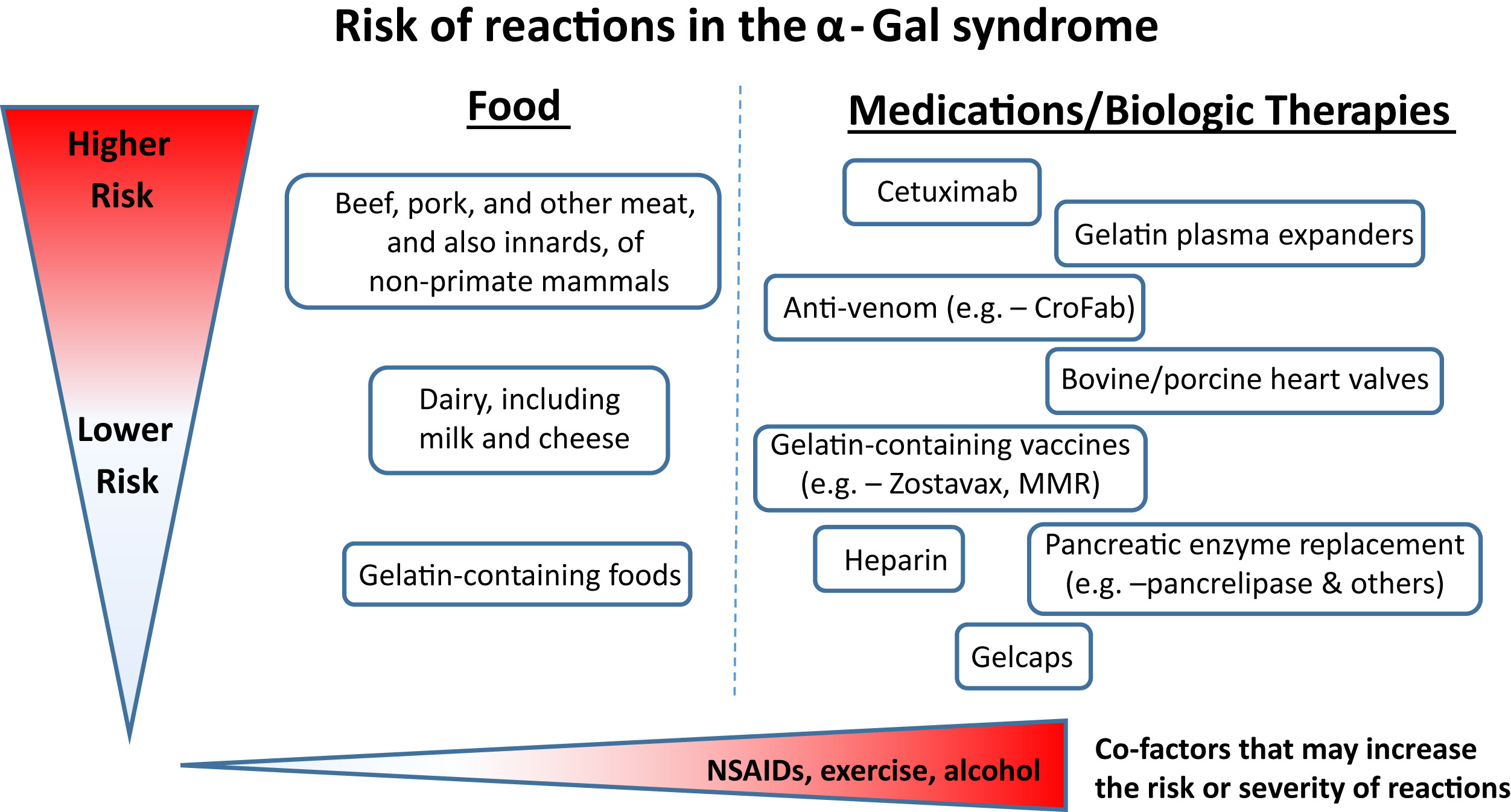
Figure 1. The risk and also severity of reactions in the α-Gal syndrome relate to the amount of the oligosaccharide that is present in food, drugs, or other therapeutics. The route of administration is relevant to the speed at which reactions occur; that is, intravenous administration is associated with rapid reactions, whereas oral ingestion has delayed onset. Cofactors such as NSAIDs, exercise, and alcohol can be additional risk modifiers. This schematic reflects clinical experience, as well as challenge studies and laboratory investigations. CroFab, Crotalidae polyvalent immune Fab; MMR, measles, mumps, and rubella; NSAID, Nonsteroidal anti-inflammatory drug.
Reproduced from: Platts-Mills TA, Li RC, Keshavarz B, Smith AR, Wilson JM. Diagnosis and management of patients with the α-Gal syndrome. The Journal of Allergy and Clinical Immunology: In Practice. 2020 Jan 1;8(1):15-23, with permission from Elsevier.

Reproduced from: Platts-Mills TA, Li RC, Keshavarz B, Smith AR, Wilson JM. Diagnosis and management of patients with the α-Gal syndrome. The Journal of Allergy and Clinical Immunology: In Practice. 2020 Jan 1;8(1):15-23, with permission from Elsevier.
Gelatin in Foods
Functional properties of gelatin in foods
Learning about the various reasons why gelatin is added to foods can help you develop a sense of the categories of foods you need to be most cautious about.
- Gelatin is used as an ingredient in many foods as a stabilizer, thickener, texturizer and to improve the mouth-feel of reduced-fat foods.
- Gelatin is also used as a processing aid, for example to clarify beverages, like wine, beer and juice.
- When gelatin is used processing aid in the manufacture of a product, there may be residues of gelatin left in it.
- Processing aids do not need to be listed as ingredients (103)
When used as an incidental additive or as a processing aid in insignificant amounts, gelatin is exempt from food labeling requirements. This is the case when gelatin is used as a clarifying agent in wine, beer, or juice or used as a carrier in juice or soft drinks (103).
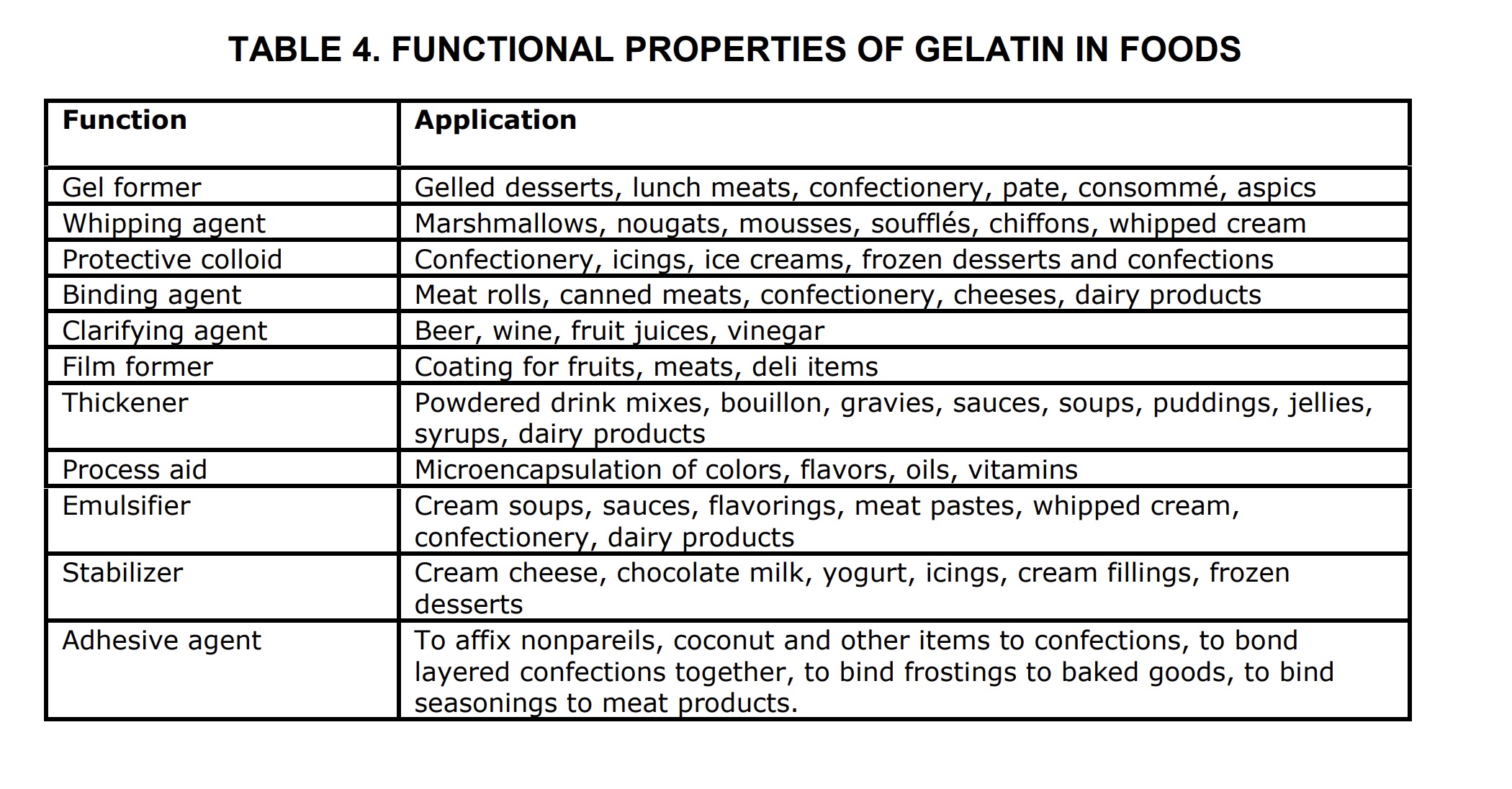
Source: Organic Materials Review Institute for the USDA National Organic Program. (2002). “Gelatin: Processing.” National Organic Standards Board Technical Advisory Panel Review.
Examples of Foods That May Contain Gelatin
Foods that can contain gelatin include, but are not limited to:
- Candy including Starburst, Altoids, gummy worms and other gummy candies, peeps, some candy corn, and jelly beans
- Gummy vitamins and supplements, including fish oil in gelatin capsules
- Jello gelatin
- Marshmallows
- Dairy products, including yogurt, ice cream, whipped cream, sour cream, cream cheese, cottage cheese, cheese spreads, and semi-fat cheese spreads
- Margarine
- Desserts, including popsicles, instant dessert powders, cakes or cake fillings, instant puddings, cheesecake
- Jellies and jams
- Icing and frosting
- Syrups
- Snacks, including Rice Krispy Treats, Poptarts, snack bars, and fruit-flavored snacks
- Pastries and other baked goods
- Some cereals, like Lucky Charms, Kellogg’s Frosted Mini-Wheats and other frosted cereals, cereals with marshmallows in them, and many others.
- Peanuts, such as Planters Dry Roasted Peanuts, which are coated with gelatin to help the salt stick
- Fruit salads
- Food foams (espuma)
- Aspic
- Dips
- Soups and stock, including jellied tomato consommé
- Sauces
- Glazes
- Meats and meat products, including:
- Bouillon
- Sausage coatings
- Ground meat
- Sausages
- Frozen turkey products
- Lunch meats
- Chicken rolls
- Canned meat
- Turkey
- Instant gravy, instant sauces and soups
- Beverages, including:
- Animal glue, for example, as an adhesive on stickers used on fruit
- As a coating on fresh vegetables and fruit
- Gelatin is used as a processing aid for:
- Clarification of beverages such as wine, beer, vegetable and fruit juice (especially apple juice), and possibly vinegar
- Microencapsulation of colors, flavors, oils, vitamins
If you react to gelatin, always check labels to see if foods, medications, and personal care products contain it before you buy them. Fish gelatin is not from mammals and many people with AGS use it as a substitute for mammalian gelatin.

⚠ Contains gelatin

⚠ Contains gelatin

⚠ Contains gelatin
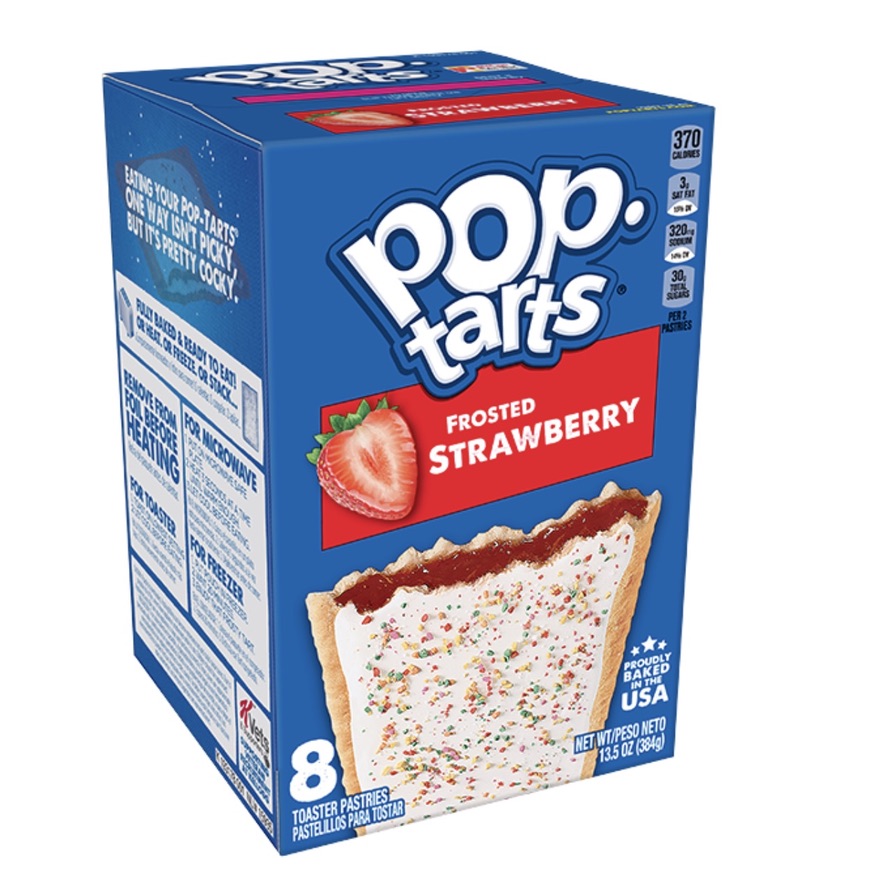
⚠ Contains gelatin

⚠ Contains gelatin

⚠ Contains gelatin
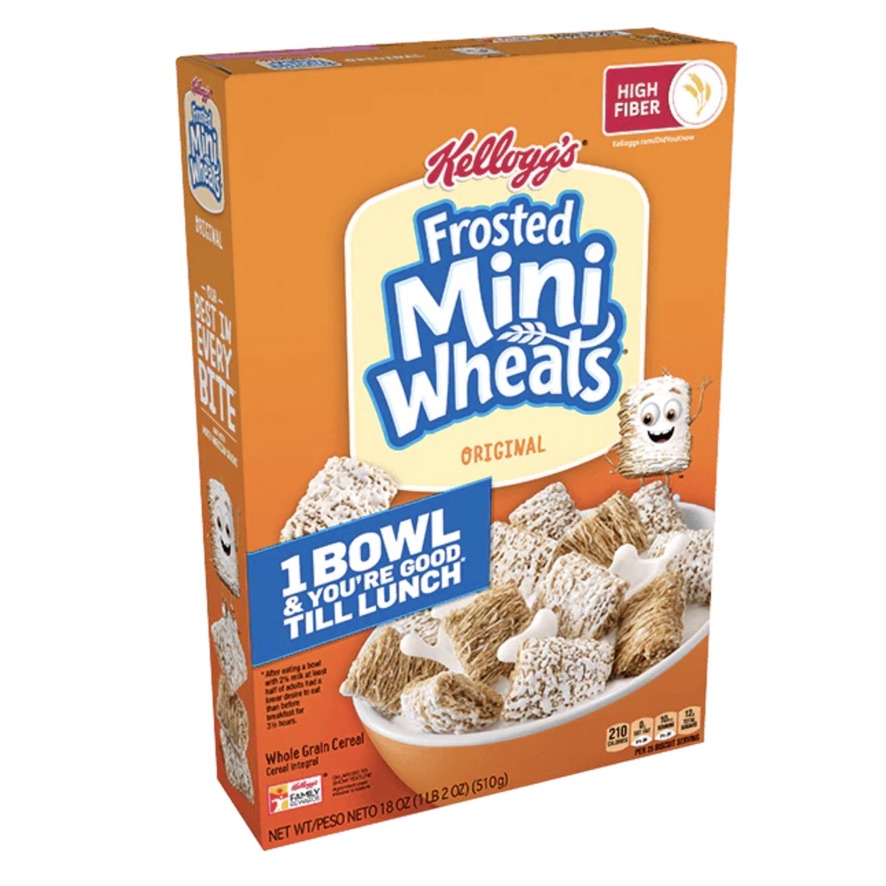
⚠ Contains gelatin

⚠ Contains gelatin
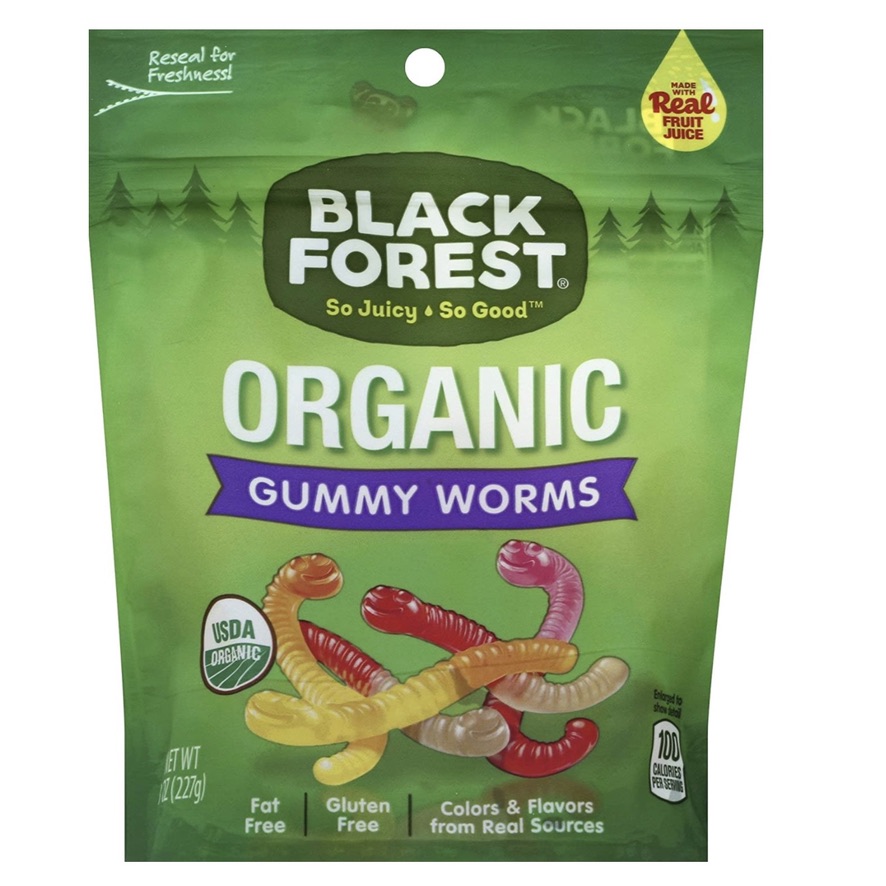
⚠ Contains gelatin

⚠ Contains gelatin
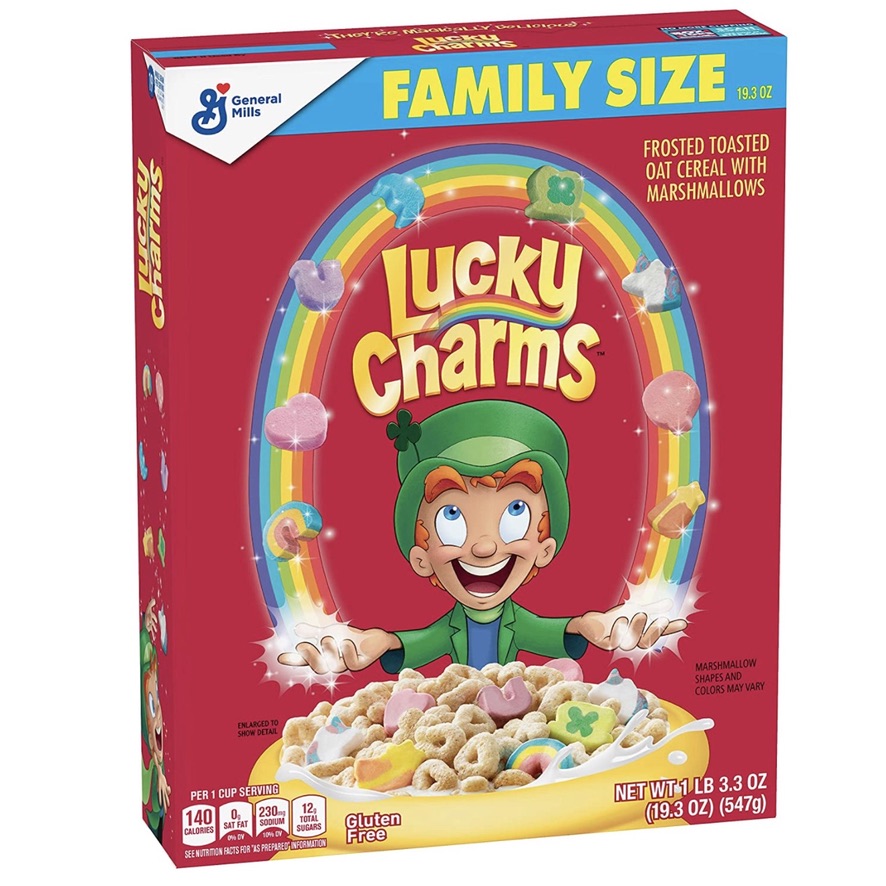
⚠ Contains gelatin

⚠ Contains gelatin

⚠ Contains gelatin

⚠ Usually contains gelatin

⚠ Often clarified with gelatin

⚠ Sometime contains gelatin (turkey lunch meat)

⚠ Sometime contains gelatin (frosting)

⚠ Sometimes contains gelatin

⚠ Sometimes contains gelatin (soup)
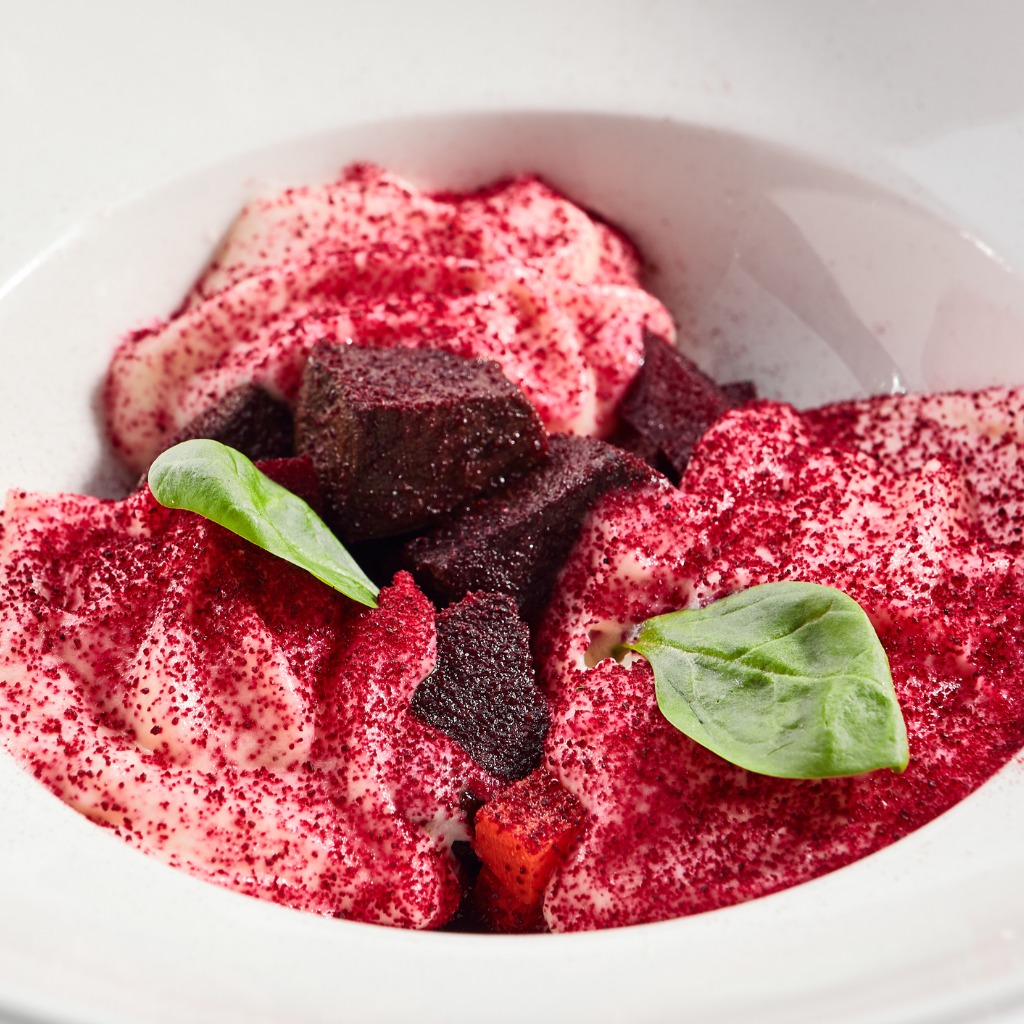
⚠ Sometimes contains gelatin (espuma)
Try These Substitutes

⚠ Regular marshmallows
(made with gelatin from pigs or cows)
←Instead of this
Try this→
Most marshmallows are made with gelatin from pigs or cows. Paskesz marshmallows are made with fish gelatin instead.
Note that Paskesz marshmallows contain “natural and artificial flavors.” Manufacturers usually cannot verify that products made with “natural flavors” do not contain mammal-derived ingredients. Thus, we can’t guarantee that these marshmallows are completely mammal free, but many people with AGS eat them without reacting.
Marshmallow Fluff is also gelatin-free. Note that the strawberry version contains “natural flavors.”
Beware of vegan marshmallows, like Dandies. They often contain carrageenan, which is not from a mammal, but which also contains alpha-gal.
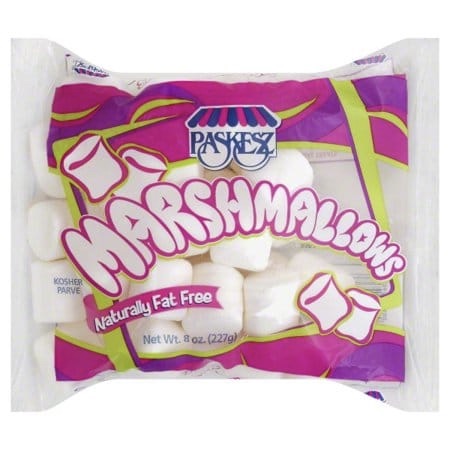
✅ Paskesz Marshmallows (made with fish gelatin)

⚠ Haribo Gold-Bears Gummi Candy
(made with gelatin from pigs or cows)
←Instead of this
Try this→
Most gummi bears are made with gelatin from mammals.
Try Annie’s Bunny Fruit Snacks instead.
See PETA’s Ultimate List of Surprisingly Vegan Candy for more vegan candy ideas. Check candy ingredient list yourself before you buy them, keeping the following in mind:
1. Many of the products on this list contain “natural flavors” and may contain mammal-derived ingredients, despite PETA’s claim. You may need to avoid these.
2. Manufacturers can change ingredients at any time.
3. Some vegan foods contain carrageenan, which is not from a mammal but also contains alpha-gal (54).
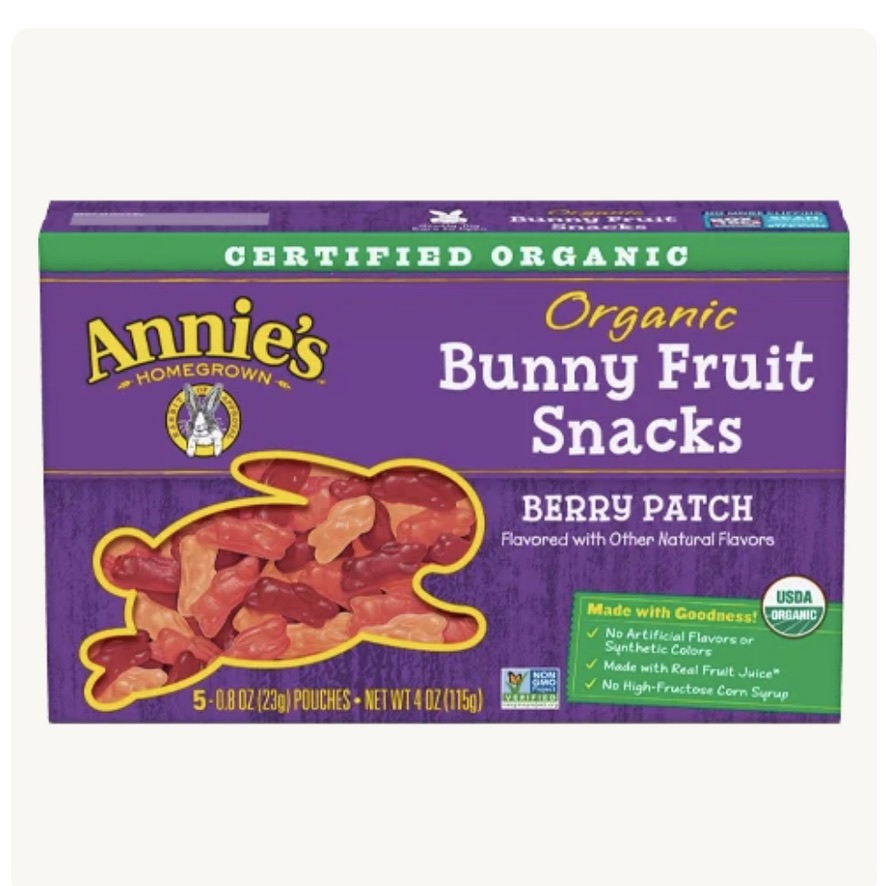
✅ Annie’s Organic Bunny Fruit Snacks
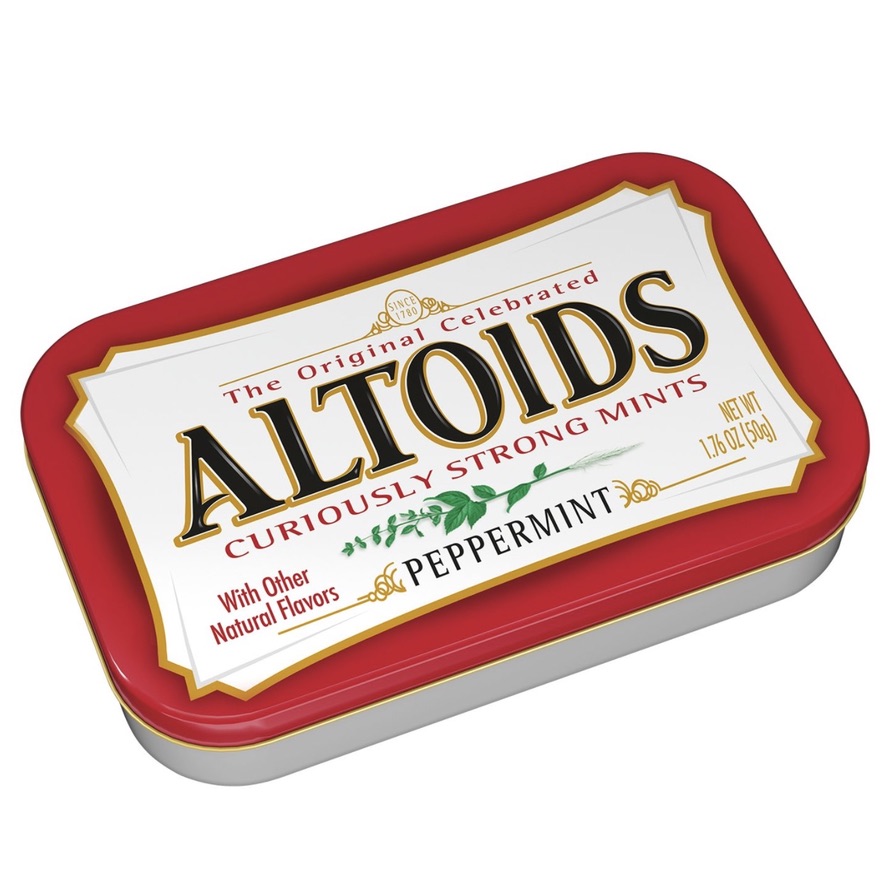
⚠ Altoids
(made with gelatin from pigs or cows)
←Instead of this
Try this→
Most Altoids are made with gelatin from pigs or cows.
Try Newman’s Own Organic Peppermints instead.
Check out additional recommendations for vegan mints from PETA here, but remember to check the ingredient list for “natural flavors” and carrageenan, if you react to it.
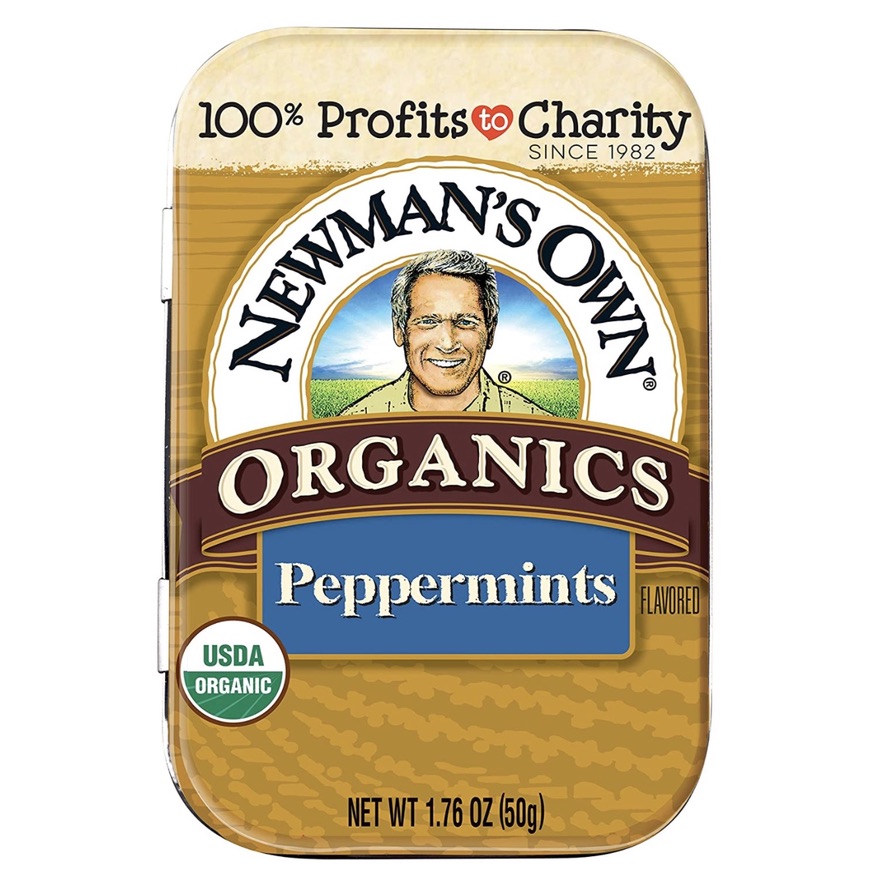
✅ Newman’s Own Organics Peppermints

⚠ Frosted Poptarts
(made with gelatin from pigs or cows)
←Instead of this
Try this→
Frosted Poptarts are made with pig or cow gelatin. Luckily, at least some unfrosted Poptarts are not. Try an unfrosted Poptart, but first check the label and make sure it doesn’t contain some other form of alpha-gal. Buy some vegan icing to spread on it or make your own vegan icing.

✅ Some Unfrosted Poptarts

⚠ Planters Dry Roasted Peanuts
(made with gelatin from pigs or cows)
←Instead of this
Try this→
Planters Dry Roasted Peanuts are coated with gelatin to make the salt stick.
Try Costco’s Kirkland Signature Super Extra-Large Roasted and Salted Peanuts instead.
Lots of peanuts and tree nuts, including some Planters products, do not contain gelatin. Just check the label before you buy them.
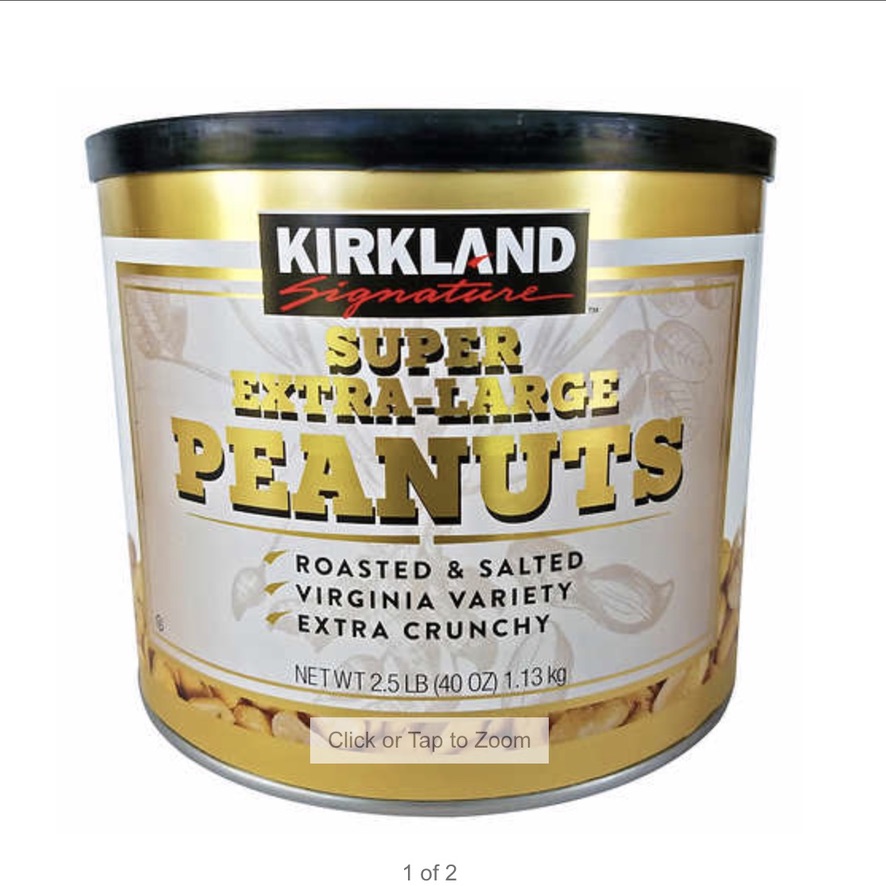
✅ Kirkland Signature Roasted and Salted Super Extra-Large Peanuts

⚠ Kellogg’s Frosted Mini Wheats
(made with gelatin from pigs or cows)
←Instead of this
Try this→
Kellogg’s Frosted Mini Wheats are made with gelatin from pigs or cows.
Try Kashi Autumn Wheat Organic Whole Wheat Biscuits instead.
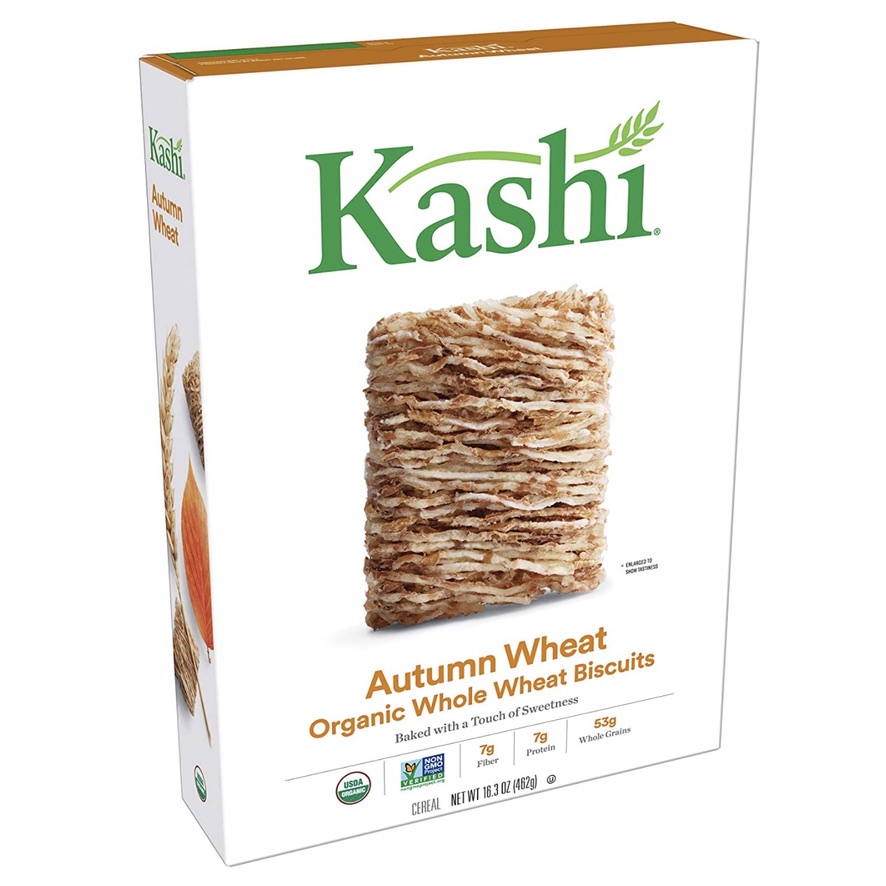
✅ Kashi Autumn Wheat Organic Whole Wheat Biscuits
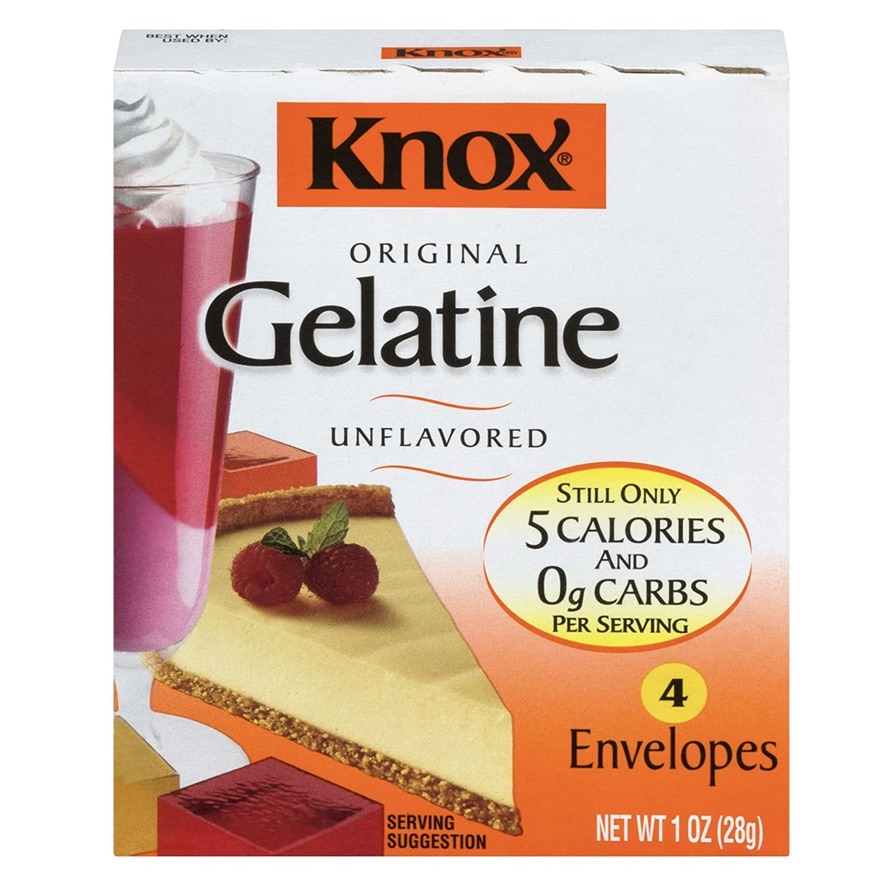
⚠ Knox Original Gelatine
(made with gelatin from pigs or cows)
←Instead of this
Try this→
Knox gelatine is made from mammals. Try using fish gelatin instead.
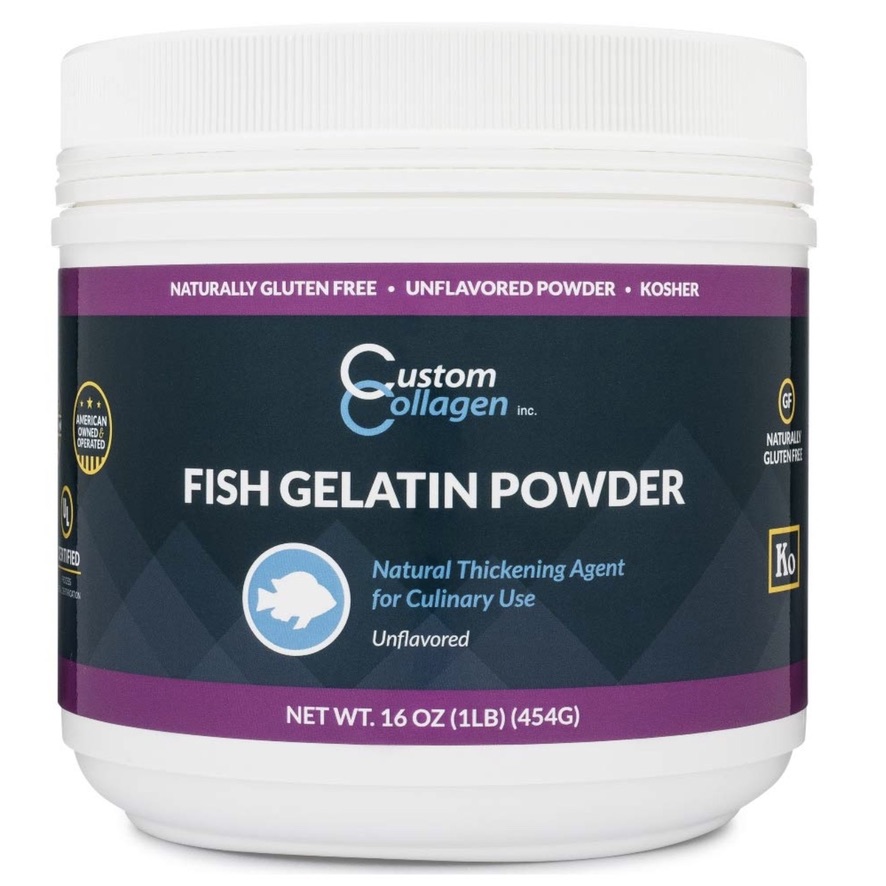
✅ Fish Gelatin
Personal Care, Household, and Other Products That May Contain Gelatin
Personal Care Products That May Contain Gelatin
Most people with AGS tolerate gelatin in personal care products, but some do not. Gelatin in oral care products tends to be the most problematic. Personal care products that may contain gelatin include, but are not limited to:
- Skin care products, such as:
- Hair products, such as:
- Cosmetics
- Sunscreens (99)
- Bath salts and bubbles (99)
- Body wash/cleansers and shower gels (99,100)
- Nail polish remover (100)
- Oral care products:
- Tooth whiteners (100)
See the Environmental Working Group’s Skin Deep database for more information about personal care products that contain gelatin.
Other Uses of Gelatin
Other products and processes for which gelatin is used include, but are not limited to:
- NCR paper and other paper (102,103)
- Photographic paper and film (102)
- Animal glue, used for woodwork, bookbinding, and in the preparation of canvasses for painters
- Pesticides (103)
- Herbicides (103)
- Paintballs (103)
- Electrochemical plating (103)
- Adhesives (103)
- Binding agent in paint (103)
- Stucco restoration (103)
- Polystyrene production (103)
- As a binder in construction (103)
Resources
Products Recommended by People with Alpha-gal Syndrome
Below are links to Amazon.com lists of products recommended by people with AGS. They should not contain gelatin or other forms of alpha-gal, but keep in mind that ingredients can change, and people can make mistakes, so you need to check the ingredients yourself before purchasing any of these items. If you suspect that any of these products is not safe for people with AGS, contact us at [email protected].
Alpha-gal-free personal care and other products
For a list of personal care and other products recommended by people with AGS, click here.
More alpha-gal-free hair products
For additional hair products recommended by people with AGS, click here.
Alpha-gal-free cleaning products
For a list of household products recommended by people with AGS, click here.
Smart Label
SmartLabel® is a tool that gives consumers a way to digitally access more detailed product information than could ever fit on a package label about a wide range of food, beverage, supplement, household, pet care, personal care, and over-the-counter products. It is fast and easy to use, with a consistent digital format that shares accurate data directly from the manufacturer in real-time.
Consumers will be able to find detailed information about products in several different ways. They can access SmartLabel® by searching the web; visiting a participating company’s or brand’s website; scanning a SmartLabel® QR or digital code on packages; or using the SmartLabel® Product Search on this site. There is also a certified app to access SmartLabel® information, which can be downloaded on your smartphone. Simply go to your app store, and search for “SmartLabel®.” The SmartLabel® app will be the first result to pop up. People can access SmartLabel® and its information whether they are in the store, at home, or at work, and by using a smart phone, tablet or desktop computer.
Environmental Working Group: Skin Deep Database
References
1. Commins SP, Satinover SM, Hosen J, Mozena J, Borish L, Lewis BD, Woodfolk JA, Platts-Mills TA. Delayed anaphylaxis, angioedema, or urticaria after consumption of red meat in patients with IgE antibodies specific for galactose-α-1, 3-galactose. Journal of Allergy and Clinical Immunology. 2009 Feb 1;123(2):426-33.
2. Commins S, Lucas S, Hosen J, Satinover SM, Borish L, Platts-Mills TA. Anaphylaxis and IgE antibodies to galactose-alpha-1, 3-galactose (alphaGal): insight from the identification of novel IgE ab to carbohydrates on mammalian proteins. Journal of Allergy and Clinical Immunology. 2008 Feb 1;121(2):S25.
3. Commins SP, James HR, Kelly LA, Pochan SL, Workman LJ, Perzanowski MS, Kocan KM, Fahy JV, Nganga LW, Ronmark E, Cooper PJ. The relevance of tick bites to the production of IgE antibodies to the mammalian oligosaccharide galactose-α-1, 3-galactose. Journal of Allergy and Clinical Immunology. 2011 May 1;127(5):1286-93.
4. Soh JY, Huang CH, Lee BW. Carbohydrates as food allergens. Asia Pacific Allergy. 2015 Jan 1;5(1):17-24.
5. Levin M, Apostolovic D, Biedermann T, Commins SP, Iweala OI, Platts-Mills TA, Savi E, van Hage M, Wilson JM. Galactose α-1, 3-galactose phenotypes: Lessons from various patient populations. Annals of Allergy, Asthma & Immunology. 2019 Jun 1;122(6):598-602.
6. Platts-Mills TA, Li RC, Keshavarz B, Smith AR, Wilson JM. Diagnosis and management of patients with the α-Gal syndrome. The Journal of Allergy and Clinical Immunology: In Practice. 2020 Jan 1;8(1):15-23.
7. Commins SP. Invited commentary: alpha-gal allergy: tip of the iceberg to a pivotal immune response. Current allergy and asthma reports. 2016 Sep 1;16(9):61.
8. Crispell G, Commins SP, Archer-Hartman SA, Choudhary S, Dharmarajan G, Azadi P, Karim S. Discovery of alpha-gal-containing antigens in North American tick species believed to induce red meat allergy. Frontiers in immunology. 2019 May 17;10:1056.
9. Monzón JD, Atkinson EG, Henn BM, Benach JL. Population and evolutionary genomics of Amblyomma americanum, an expanding arthropod disease vector. Genome biology and evolution. 2016 May 1;8(5):1351-60.
10. Raghavan RK, Peterson AT, Cobos ME, Ganta R, Foley D. Current and future distribution of the lone star tick, Amblyomma americanum (L.)(Acari: Ixodidae) in North America. PLoS One. 2019 Jan 2;14(1):e0209082.
11. Wilson JM, Platts-Mills TA. Red meat allergy in children and adults. Current opinion in allergy and clinical immunology. 2019 Jun 1;19(3):229-35.
12. Commins, SP. (2018). Retrieved from: More people developing red meat allergy from tick bites. CBS News
13. Flaherty MG, Threats M, Kaplan SJ. Patients’ Health Information Practices and Perceptions of Provider Knowledge in the Case of the Newly Discovered Alpha-gal Food Allergy. Journal of Patient Experience. 2020 Feb;7(1):132-9.
14. Flaherty MG, Kaplan SJ, Jerath MR. Diagnosis of life-threatening alpha-gal food allergy appears to be patient driven. Journal of primary care & community health. 2017 Oct;8(4):345-8.
15. Cabezas-Cruz A, Hodžić A, Román-Carrasco P, Mateos-Hernández L, Duscher GG, Sinha DK, Hemmer W, Swoboda I, Estrada-Peña A, De La Fuente J. Environmental and molecular drivers of the α-Gal syndrome. Frontiers in Immunology. 2019 May 31;10:1210.
16. Commins SP, Platts-Mills TA. Tick bites and red meat allergy. Current opinion in allergy and clinical immunology. 2013 Aug;13(4):354.
17. Stoltz LP, Cristiano LM, Dowling AP, Wilson JM, Platts-Mills TA, Traister RS. Could chiggers be contributing to the prevalence of galactose-alpha-1, 3-galactose sensitization and mammalian meat allergy?. The journal of allergy and clinical immunology. In practice. 2019 Feb;7(2):664.
18. Arkestål K, Sibanda E, Thors C, Troye-Blomberg M, Mduluza T, Valenta R, Grönlund H, van Hage M. Impaired allergy diagnostics among parasite-infected patients caused by IgE antibodies to the carbohydrate epitope galactose-α1, 3-galactose. Journal of Allergy and Clinical Immunology. 2011 Apr 1;127(4):1024-8.
19. Chinuki Y, Ishiwata K, Yamaji K, Takahashi H, Morita E. Haemaphysalis longicornis tick bites are a possible cause of red meat allergy in Japan. Allergy. 2016 Mar;71(3):421-5.
20. Hashizume H, Fujiyama T, Umayahara T, Kageyama R, Walls AF, Satoh T. Repeated Amblyomma testudinarium tick bites are associated with increased galactose-α-1, 3-galactose carbohydrate IgE antibody levels: a retrospective cohort study in a single institution. Journal of the American Academy of Dermatology. 2018 Jun 1;78(6):1135-41.
21. Bianchi, John (2019). Personal communication
22. Morisset M, Richard C, Astier C, Jacquenet S, Croizier A, Beaudouin E, Cordebar V, Morel‐Codreanu F, Petit N, Moneret‐Vautrin DA, Kanny G. Anaphylaxis to pork kidney is related to I g E antibodies specific for galactose‐alpha‐1, 3‐galactose. Allergy. 2012 May;67(5):699-704.
23. Fischer J, Hebsaker J, Caponetto P, Platts-Mills TA, Biedermann T. Galactose-alpha-1, 3-galactose sensitization is a prerequisite for pork-kidney allergy and cofactor-related mammalian meat anaphylaxis. Journal of allergy and clinical immunology. 2014 Sep 1;134(3):755-9.
24. Fischer J, Yazdi AS, Biedermann T. Clinical spectrum of α-Gal syndrome: from immediate-type to delayed immediate-type reactions to mammalian innards and meat. Allergo journal international. 2016 Mar 1;25(2):55-62.
25. McPherson TB, Liang H, Record RD, Badylak SF. Galα (1, 3) Gal epitope in porcine small intestinal submucosa. Tissue engineering. 2000 Jun 1;6(3):233-9.
26. Fujiwara M, Araki T. Immediate anaphylaxis due to beef intestine following tick bites. Allergology International. 2019;68(1):127-9.
27. Caponetto P, Fischer J, Biedermann T. Gelatin-containing sweets can elicit anaphylaxis in a patient with sensitization to galactose-α-1, 3-galactose. The Journal of Allergy and Clinical Immunology: In Practice. 2013 May 1;1(3):302-3.
28. Mullins RJ, James H, Platts-Mills TA, Commins S. Relationship between red meat allergy and sensitization to gelatin and galactose-α-1, 3-galactose. Journal of Allergy and Clinical Immunology. 2012 May 1;129(5):1334-42.
29. Kaman K, Robertson D. ALPHA-GAL ALLERGY; MORE THAN MEAT?. Annals of Allergy, Asthma & Immunology. 2018 Nov 1;121(5):S115.
30. Chung CH, Mirakhur B, Chan E, Le QT, Berlin J, Morse M, Murphy BA, Satinover SM, Hosen J, Mauro D, Slebos RJ. Cetuximab-induced anaphylaxis and IgE specific for galactose-α-1, 3-galactose. New England journal of medicine. 2008 Mar 13;358(11):1109-17.
31. Berg EA, Platts-Mills TA, Commins SP. Drug allergens and food—the cetuximab and galactose-α-1, 3-galactose story. Annals of Allergy, Asthma & Immunology. 2014 Feb 1;112(2):97-101.
32. Dunkman WJ, Rycek W, Manning MW. What does a red meat allergy have to do with anesthesia? Perioperative management of alpha-gal syndrome. Anesthesia & Analgesia. 2019 Nov 1;129(5):1242-8.
33. Pfützner W, Brockow K. Perioperative drug reactions–practical recommendations for allergy testing and patient management. Allergo journal international. 2018 Jun 1;27(4):126-9.
34. Dewachter P, Kopac P, Laguna JJ, Mertes PM, Sabato V, Volcheck GW, Cooke PJ. Anaesthetic management of patients with pre-existing allergic conditions: a narrative review. British journal of anaesthesia. 2019 Jul 1;123(1):e65-81.
35. Popescu FD, Cristea OM, IONICĂ FE, Vieru M. DRUG ALLERGIES DUE TO IgE SENSITIZATION TO α-GAL. magnesium. 2018;2017:47-8.
36. Swiontek K, Morisset M, Codreanu-Morel F, Fischer J, Mehlich J, Darsow U, Petitpain N, Biedermann T, Ollert M, Eberlein B, Hilger C. Drugs of porcine origin—A risk for patients with α-gal syndrome?. The Journal of Allergy and Clinical Immunology: In Practice. 2019 May 1;7(5):1687-90.
37. Vidal C, Mendez-Brea P, Lopez-Freire S, Gonzalez-Vidal T. Vaginal Capsules: An Unsuspected Probable Source of Exposure to α-Gal. Journal of investigational allergology & clinical immunology. 2016;26(6):388.
38. Muglia C, Kar I, Gong M, Hermes-DeSantis ER, Monteleone C. Anaphylaxis to medications containing meat byproducts in an alpha-gal sensitized individual. The journal of allergy and clinical immunology. In practice. 2015;3(5):796.
39. Akella K, Patel H, Wai J, Roppelt H, Capone D. Alpha Gal-Induced Anaphylaxis to Herpes Zoster Vaccination. Chest. 2017 Oct 1;152(4):A6.
40. Bakhtiar MF, Leong KW, Kwok FY, Hui MT, Tang MM, Joseph CT, Bathumana‐Appan PP, Nagum AR, ZHM Y, Murad S. P66: ALLERGIC REACTION TO BOVINE GELATIN COLLOID: THE ROLE OF IMMUNOGLOBULIN E TOWARDS GALACTOSE‐ALPHA‐1, 3‐GALACTOSE: IMPLICATIONS BEYOND RED MEAT ALLERGIES. Internal Medicine Journal. 2017 Sep;47:24-.
41. Bradfisch F, Pietsch M, Forchhammer S, Strobl S, Stege HM, Pietsch R, Carstens S, Schäkel K, Yazdi A, Saloga J. Case series of anaphylactic reactions after rabies vaccinations with gelatin sensitization. Allergo Journal International. 2019 Jun 1;28(4):103-6.
42. Stone CA, Commins SP, Choudhary S, Vethody C, Heavrin JL, Wingerter J, Hemler JA, Babe K, Phillips EJ, Norton AE. Anaphylaxis after vaccination in a pediatric patient: further implicating alpha-gal allergy. The Journal of Allergy and Clinical Immunology: In Practice. 2019 Jan 1;7(1):322-4.
43. Stone CA, Hemler JA, Commins SP, Schuyler AJ, Phillips EJ, Peebles RS, Fahrenholz JM. Anaphylaxis after zoster vaccine: Implicating alpha-gal allergy as a possible mechanism. Journal of Allergy and Clinical Immunology. 2017 May 1;139(5):1710-3.
44. Pattanaik D, Lieberman P, Lieberman J, Pongdee T, Keene AT. The changing face of anaphylaxis in adults and adolescents. Annals of Allergy, Asthma & Immunology. 2018 Nov 1;121(5):594-7.
45. Ankersmit HJ, Copic D, Simader E. When meat allergy meets cardiac surgery: A driver for humanized bioprosthesis. The Journal of thoracic and cardiovascular surgery. 2017 Oct 1;154(4):1326-7.
46. Hawkins RB, Frischtak HL, Kron IL, Ghanta RK. Premature bioprosthetic aortic valve degeneration associated with allergy to galactose‐alpha‐1, 3‐galactose. Journal of cardiac surgery. 2016 Jul;31(7):446-8.
47. Kleiman AM, Littlewood KE, Groves DS. Delayed anaphylaxis to mammalian meat following tick exposure and its impact on anesthetic management for cardiac surgery: a case report. A&A Practice. 2017 Apr 1;8(7):175-7.
48. Mozzicato SM, Tripathi A, Posthumus JB, Platts-Mills TA, Commins SP. Porcine or bovine valve replacement in three patients with IgE antibodies to the mammalian oligosaccharide galactose-alpha-1, 3-galactose. The journal of allergy and clinical immunology. In practice. 2014 Sep;2(5):637.
49. Mangold A, Szerafin T, Hoetzenecker K, Hacker S, Lichtenauer M, Niederpold T, Nickl S, Dworschak M, Blumer R, Auer J, Ankersmit HJ. Alpha-Gal specific IgG immune response after implantation of bioprostheses. The Thoracic and cardiovascular surgeon. 2009 Jun;57(04):191-5.
50. Fischer J, Eberlein B, Hilger C, Eyer F, Eyerich S, Ollert M, Biedermann T. Alpha‐gal is a possible target of IgE‐mediated reactivity to antivenom. Allergy. 2017 May;72(5):764-71.
51. Rizer J, Brill K, Charlton N, King J. Acute hypersensitivity reaction to Crotalidae polyvalent immune Fab (CroFab) as initial presentation of galactose-α-1, 3-galactose (α-gal) allergy. Clinical Toxicology. 2017 Aug 9;55(7):668-9.
52. Farooque S, Kenny M, Marshall SD. Anaphylaxis to intravenous gelatin‐based solutions: a case series examining clinical features and severity. Anaesthesia. 2019 Feb;74(2):174-9.
53. Lied GA, Lund KB, Storaas T. Intraoperative anaphylaxis to gelatin-based hemostatic agents: a case report. Journal of asthma and allergy. 2019;12:163.
54. Tobacman JK. The common food additive carrageenan and the alpha-gal epitope. Journal of Allergy and Clinical Immunology. 2015 Dec 1;136(6):1708-9.
55. Tarlo SM, Dolovich J, Listgarten C. Anaphylaxis to carrageenan: A pseudo–latex allergy. Journal of allergy and clinical immunology. 1995 May 1;95(5):933-6.
56. Steinke JW, Platts-Mills TAE, Schuyler A, Commins SP. Reply to “The common food additive carrageenan and the alpha-gal epitope”. Journal of Allergy and Clinical Immunology. 2015 Oct 28;136(6):1709-10
57. Commins SP. Diagnosis & management of alpha-gal syndrome: lessons from 2,500 patients. Expert Review of Clinical Immunology. 2020 Jul 9:1-1.
58. Galili, U., & Avila, J. L. (Eds.). (2012). α–Gal and Anti–Gal: α1, 3–Galactosyltransferase, α–Gal Epitopes, and the Natural Anti–Gal Antibody Subcellular Biochemistry (Vol. 32). Springer Science & Business Media.
59. Fischer J, Lupberger E, Hebsaker J, Blumenstock G, Aichinger E, Yazdi AS, Reick D, Oehme R, Biedermann T. Prevalence of type I sensitization to alpha‐gal in forest service employees and hunters. Allergy. 2017 Oct;72(10):1540-7.
60. SAT0456 SERO-REACTIVITY TO GALACTOSE-ALPHA-1,3-GALACTOSE AND CLINICAL PRESENTATIONS OF PATIENTS SEEN IN A RHEUMATOLOGY OUTPATIENT PRACTICE. Annals of the Rheumatic Diseases 2019 Jun 15;78:1317-8.
61. Bianchi J, Walters A, Fitch ZW, Turek JW. Alpha-gal syndrome: Implications for cardiovascular disease. Global Cardiology Science and Practice. 2020 Feb 9;2019(3).
62. Carter MC, Ruiz‐Esteves KN, Workman L, Lieberman P, Platts‐Mills TA, Metcalfe DD. Identification of alpha‐gal sensitivity in patients with a diagnosis of idiopathic anaphylaxis. Allergy. 2018 May;73(5):1131-4.
63. Commins, SP retrieved from: https://twitter.com/scott_commins/status/1232777851541360643
64. I-TICK Surveillance. Retrieved from: https://twitter.com/ITickUIUC/status/1282799807996854278
65. Wickner PG, Commins SP. The first 4 Central American cases of delayed meat allergy with galactose-alpha-1, 3-galactose positivity clustered among field biologists in Panama. Journal of Allergy and Clinical Immunology. 2014 Feb 1;133(2):AB212.
66. Ohshita N, Ichimaru Y, Gamoh S, Tsuji K, Kishimoto N, Tsutsumi YM, Momota Y. Management of infusion reactions associated with cetuximab treatment: A case report. Molecular and Clinical Oncology. 2017 Jun 1;6(6):853-5.
67. Stein D, Schuyler A, Commins S, Behm B, Chitnavis M. P-002 YI First Dose IgE-Mediated Allergy to Infliximab Due to Galactose-α-1, 3-Galactose Allergy. Inflammatory Bowel Diseases. 2016 Mar 1;22:S9-10.
68. Van Tine BA, Govindarajan R, Attia S, Somaiah N, Barker SS, Shahir A, Barrett E, Lee P, Wacheck V, Ramage SC, Tap WD. Incidence and management of olaratumab infusion-related reactions. Journal of oncology practice. 2019 Nov;15(11):e925-33.
69. Venturini M, Lobera T, Sebastián A, Portillo A, Oteo JA. IgE to α-Gal in Foresters and Forest Workers From La Rioja, North of Spain. Journal of investigational allergology & clinical immunology. 2018;28(2):106.
70. Apostolovic D, Tran TA, Hamsten C, Starkhammar M, Cirkovic Velickovic T, van Hage M. Immunoproteomics of processed beef proteins reveal novel galactose‐α‐1, 3‐galactose‐containing allergens. Allergy. 2014 Oct;69(10):1308-15.
71. Khora SS, Navya P. Bioactive Polysaccharides from Marine Macroalgae. Encyclopedia of Marine Biotechnology. 2020 Aug 4.
72. Gowda DC, Glushka J, Halbeek HV, Thotakura RN, Bredehorst R, Vogel CW. N-linked oligosaccharides of cobra venom factor contain novel α (1-3) galactosylated Lex structures. Glycobiology. 2001 Mar 1;11(3):195-208.
73. Hodžić A, Mateos-Hernández L, Fréalle E, Román-Carrasco P, Alberdi P, Pichavant M, Risco-Castillo V, Le Roux D, Vicogne J, Hemmer W, Auer H. Infection with Toxocara canis Inhibits the Production of IgE Antibodies to α-Gal in Humans: Towards a Conceptual Framework of the Hygiene Hypothesis?. Vaccines. 2020 Jun;8(2):167.
74. Taguchi T, Kitajima K, Muto Y, Inoue S, Khoo KH, Morris HR, Dell A, Wallace RA, Selman K, Inoue Y. A precise structural analysis of a fertilization-associated carbohydrate-rich glycopeptide isolated from the fertilized eggs of euryhaline killi fish (Fundulus heteroclitus). Novel penta-antennary N-glycan chains with a bisecting N-acetylglucosaminyl residue. Glycobiology. 1995 Sep 1;5(6):611-24.
75. Shao Y, Yu Y, Pei CG, Qu Y, Gao GP, Yang JL, Zhou Q, Yang L, Liu QP. The expression and distribution of α-Gal gene in various species ocular surface tissue. International journal of ophthalmology. 2012;5(5):543.
76. Chauhan PS, Saxena A. Bacterial carrageenases: an overview of production and biotechnological applications. 3 Biotech. 2016 Dec 1;6(2):146.
77. USDA Carrageenan Handling/Processing
78. van Nunen S. Galactose-alpha-1, 3-galactose, mammalian meat and anaphylaxis: a world-wide phenomenon?. Current Treatment Options in Allergy. 2014 Sep 1;1(3):262-77.
79. Wilson JM, Nguyen AT, Schuyler AJ, Commins SP, Taylor AM, Platts-Mills TA, McNamara CA. IgE to the mammalian oligosaccharide galactose-α-1, 3-galactose is associated with increased atheroma volume and plaques with unstable characteristics—brief report. Arteriosclerosis, thrombosis, and vascular biology. 2018 Jul;38(7):1665-9.
80. Wilson JM, McNamara CA, Platts-Mills TA. IgE, α-Gal and atherosclerosis. Aging (Albany NY). 2019 Apr 15;11(7):1900.
81. Tina Merritt, MD, personal communication.
82. Hodgeman N, Horn CL, Paredes A. An Unusual Mimicker of Irritable Bowel Disease: 1855. American Journal of Gastroenterology. 2019 Oct 1;114(2019 ACG Annual Meeting Abstracts):S1039.
83. Bensinger A, Green P. Mammalian Meat Allergy Masquerading as IBS-D: 1846. American Journal of Gastroenterology. 2019 Oct 1;114(2019 ACG Annual Meeting Abstracts):S1036-7.
84. Mabelane T, Basera W, Botha M, Thomas HF, Ramjith J, Levin ME. Predictive values of alpha‐gal IgE levels and alpha‐gal IgE: Total IgE ratio and oral food challenge‐proven meat allergy in a population with a high prevalence of reported red meat allergy. Pediatric Allergy and Immunology. 2018 Dec;29(8):841-9.
85. Armstrong P, Binder A, Amelio C, Kersh G, Biggerstaff B, Beard C, Petersen L, Commins S. Descriptive Epidemiology of Patients Diagnosed with Alpha-gal Allergy—2010–2019. Journal of Allergy and Clinical Immunology. 2020 Feb 1;145(2):AB145.
86. Pointreau Y, Commins SP, Calais G, Watier H, Platts-Mills TA. Fatal infusion reactions to cetuximab: role of immunoglobulin E–mediated anaphylaxis. Journal of clinical oncology: official journal of the American Society of Clinical Oncology. 2012 Jan 20;30(3):334.
87. van Nunen S. Tick-induced allergies: mammalian meat allergy, tick anaphylaxis and their significance. Asia Pacific Allergy. 2015 Jan 1;5(1):3-16.
88. van Nunen S, O’Connor K, Fernando S, Clarke L, Boyle R. THE ASSOCIATION BETWEEN IXODES HOLOCYCLUS TICK BITE REACTIONS AND RED MEAT ALLERGY: P17. Internal Medicine Journal. 2007 Nov 1;37.
89. Van Nunen SA, O’Connor KS, Clarke LR, Boyle RX, Fernando SL. An association between tick bite reactions and red meat allergy in humans. The Medical journal of Australia. 2009 May 4;190(9):510-1.
90. Meat Allergy Tirggered by a Tick Bite with Eri McGintee retrieved from: https://youtu.be/hj96Vvr1WhQ
91. Fischer J, Huynh HN, Hebsaker J, Forchhammer S, Yazdi AS. Prevalence and Impact of Type I Sensitization to Alpha-Gal in Patients Consulting an Allergy Unit. International Archives of Allergy and Immunology. 2020;181(2):119-27.
92. Platts-Mills TA, Commins SP, Biedermann T, van Hage M, Levin M, Beck LA, Diuk-Wasser M, Jappe U, Apostolovic D, Minnicozzi M, Plaut M. On the cause and consequences of IgE to galactose-α-1, 3-galactose: a Report from the National Institute of Allergy and Infectious Disease Workshop on Understanding IgE-Mediated Mammalian Meat Allergy. Journal of Allergy and Clinical Immunology. 2020 Feb 10.
93. Takahashi H, Chinuki Y, Tanaka A, Morita E. Laminin γ‐1 and collagen α‐1 (VI) chain are galactose‐α‐1, 3‐galactose–bound allergens in beef. Allergy. 2014 Feb;69(2):199-207.
94. Hilger C, Fischer J, Swiontek K, Hentges F, Lehners C, Eberlein B, Morisset M, Biedermann T, Ollert M. Two galactose‐α‐1, 3‐galactose carrying peptidases from pork kidney mediate anaphylactogenic responses in delayed meat allergy. Allergy. 2016 May;71(5):711-9.
95. Iweala OI, Choudhary SK, Addison CT, Batty CJ, Kapita CM, Amelio C, Schuyler AJ, Deng S, Bachelder EM, Ainslie KM, Savage PB. Glycolipid-mediated basophil activation in alpha-gal allergy. Journal of Allergy and Clinical Immunology. 2020 Feb 20.
96. Iweala O, Brennan PJ, Commins SP. Serum IgE specific for alpha-Gal sugar moiety can bind glycolipid. Journal of Allergy and Clinical Immunology. 2017 Feb 1;139(2):AB88.
97. Iweala OI, Choudhary SK, Addison CT, Batty CJ, Kapita CM, Amelio C, Schuyler AJ, Deng S, Bachelder EM, Ainslie KM, Savage PB. Glycolipid-mediated basophil activation in alpha-gal allergy. Journal of Allergy and Clinical Immunology. 2020 Feb 20.
98. Villalta D, Pantarotto L, Da Re M, Conte M, Sjolander S, Borres MP, Martelli P. High prevalence of sIgE to Galactose‐α‐1, 3‐galactose in rural pre‐Alps area: a cross‐sectional study. Clinical & Experimental Allergy. 2016 Feb;46(2):377-80.
99. Gelatin Manufacturers Association of Asia Pacific (GMAP). Available from: https://gmap-gelatin.com/gelatin-in-cosmetics/#:~:text=Gelatin%20is%20used%20in%20many,the%20most%20basic%20human%20needs. [Accessed 13 October 2020].
100. Environmental Working Group’s Skin Deep product database. Available from: https://www.ewg.org/skindeep/ingredients/702554-GELATIN/ [Accessed 13 October 2020].
101. One Green Planet. 10 Common Cosmetic Ingredients That Are Derived From Animal Products. Available at: https://www.onegreenplanet.org/animalsandnature/common-cosmetic-ingredients-derived-from-animal-products/. [Accessed 13 October 2020].
102. Fishman HM. Collagen in Cosmetics. Happi Magazine. 2009 Aug 3. Available from: https://www.happi.com/issues/2009-08/view_gleams-and-notions/collagen-in-cosmetics/. [Accessed 13 October 2020].
103. Yacoubou J. Gelatin, Carmine and Rennet Labeling in the United States. Available from: https://www.vrg.org/journal/vj2015issue4/2015_issue4_GelatinCarmine.php [Accessed 28 October 2020].
104. Jensen L, Ushinsky A. Management of acute hemorrhage without the use of mammalian products in a patient with alpha-gal syndrome. J Vasc Interv Radiol. Published online May 2, 2024. doi:10.1016/j.jvir.2024.04.019
All the information on alphagalinformation.org is provided in good faith, but we, the creators and authors of the Alpha-gal Information website offer no representation or warranty, explicit or implied, of the accuracy, adequacy, validity, reliability, availability, or completeness of any information on this site. Under no circumstances should we have any liability for any loss or damage incurred by you as a result of relying on information provided here. We are not physicians or medical professionals, researchers, or experts of any kind. Information provided in this website may contain errors and should be confirmed by a physician. Information provided here is not medical advice. It should not be relied upon for decisions about diagnosis, treatment, diet, food choice, nutrition, or any other health or medical decisions. For advice about health or medical decisions including, but not limited to, diagnosis, treatment, diet, and health care consult a physician.
READ FULL DISCLAIMER>
